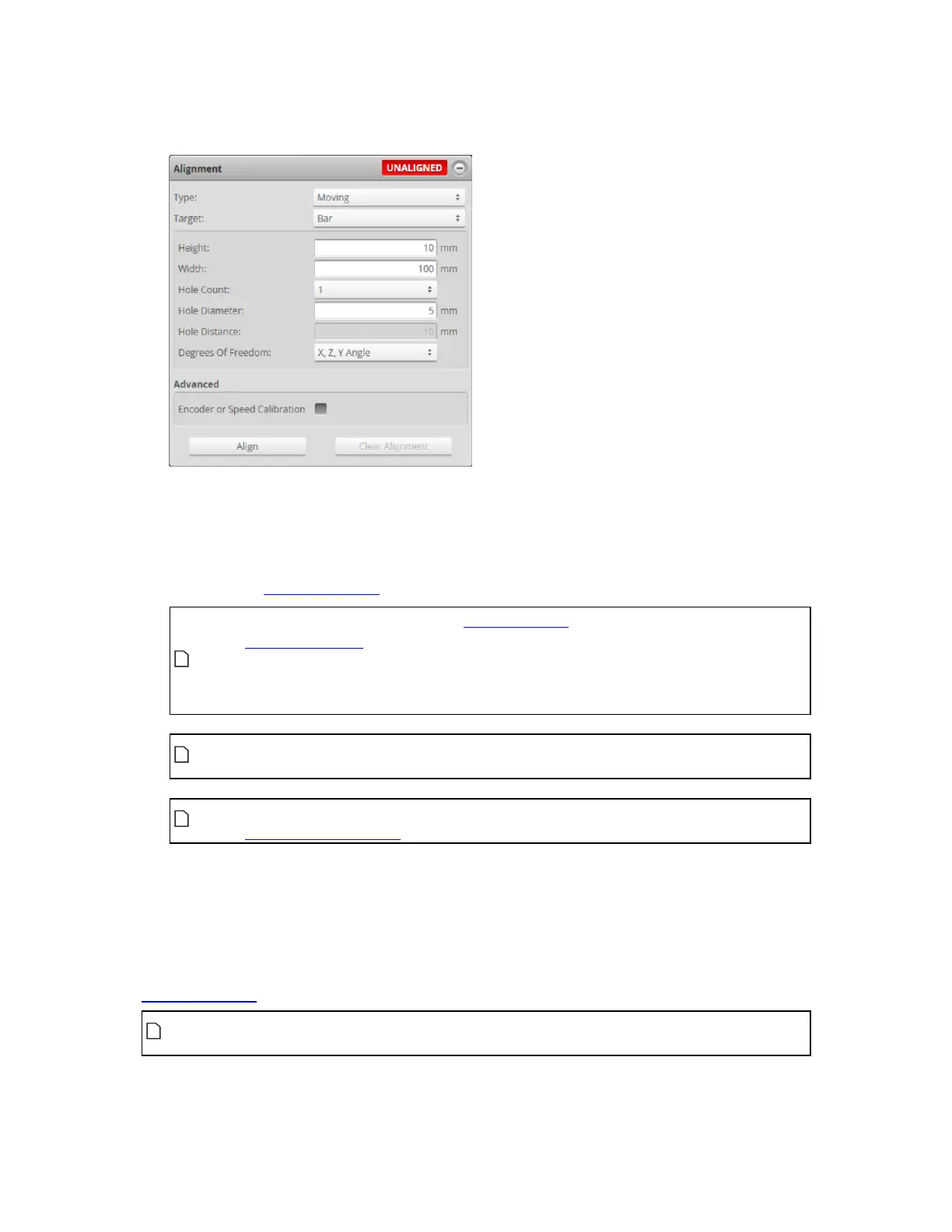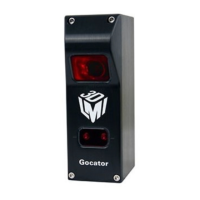Gocator Line Profile Sensors: User Manual
Gocator Web Interface • 129
Configure the characteristics of the target.
Degrees of Freedom: In moving bar alignment, three options are available, which are
combinations of different types of alignments. X, Y, and Z compensate for offsets on the X, Y, and Z
axes, respectively. YAngle and ZAngle compensate for rotation around the Yand Zaxes,
respectively. Compensating for Xangle rotation is currently only possible by manually setting the
rotation in the Transformations panel.
The Y offset, X angle, and Z angle transformations cannot be non-zero when
Uniform Spacing is unchecked. Therefore, when aligning a sensor using a bar
alignment target with Uniform Spacing unchecked, set the Degrees of Freedom
setting to X, Z, Y Angle, which prevents these transformations from being non-
zero.
On sensors aligned using Z angle or X angle, and to a lesser extent Y offset, CPU
usage increases when scanning, which reduces the maximum scan speed.
Artifacts may appear in scan data on sensors aligned using Z angle or X angle if
encoder trigger spacing is set too high (resulting in a low sampling rate).
5. Place the target under the sensor.
6. (Optional) Check the Encoder or Speed Calibration checkbox.
7. Click the Align button.
The sensors will start and then wait for the calibration target to pass through the laser plane.
Alignment is performed simultaneously for all sensors. If the sensors do not align, check and adjust the
exposure settings.
Alignment uses the exposure defined for single exposure mode, regardless of the
current exposure mode.
8. Engage the transport system.
